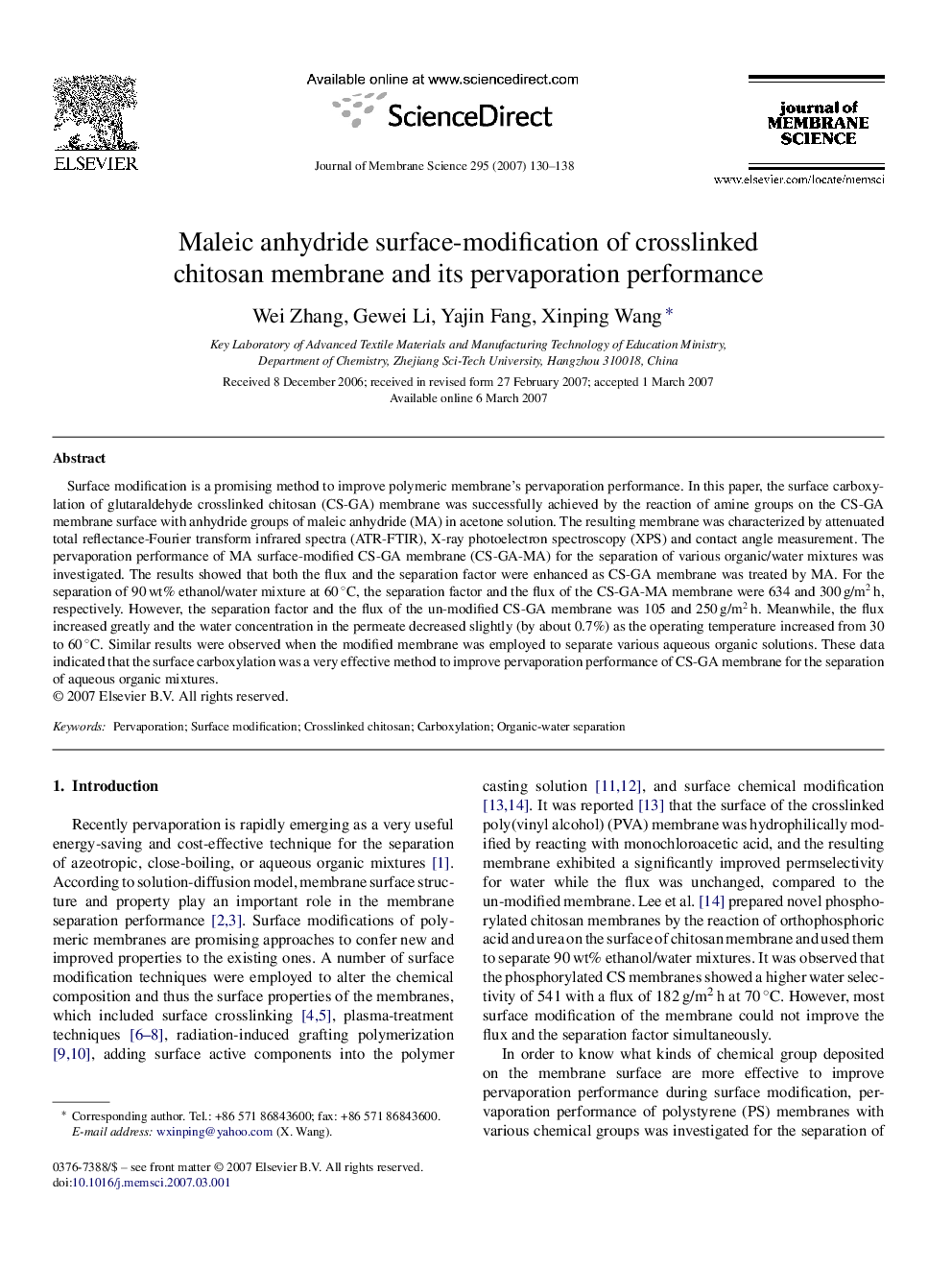| Article ID | Journal | Published Year | Pages | File Type |
|---|---|---|---|---|
| 638680 | Journal of Membrane Science | 2007 | 9 Pages |
Surface modification is a promising method to improve polymeric membrane's pervaporation performance. In this paper, the surface carboxylation of glutaraldehyde crosslinked chitosan (CS-GA) membrane was successfully achieved by the reaction of amine groups on the CS-GA membrane surface with anhydride groups of maleic anhydride (MA) in acetone solution. The resulting membrane was characterized by attenuated total reflectance-Fourier transform infrared spectra (ATR-FTIR), X-ray photoelectron spectroscopy (XPS) and contact angle measurement. The pervaporation performance of MA surface-modified CS-GA membrane (CS-GA-MA) for the separation of various organic/water mixtures was investigated. The results showed that both the flux and the separation factor were enhanced as CS-GA membrane was treated by MA. For the separation of 90 wt% ethanol/water mixture at 60 °C, the separation factor and the flux of the CS-GA-MA membrane were 634 and 300 g/m2 h, respectively. However, the separation factor and the flux of the un-modified CS-GA membrane was 105 and 250 g/m2 h. Meanwhile, the flux increased greatly and the water concentration in the permeate decreased slightly (by about 0.7%) as the operating temperature increased from 30 to 60 °C. Similar results were observed when the modified membrane was employed to separate various aqueous organic solutions. These data indicated that the surface carboxylation was a very effective method to improve pervaporation performance of CS-GA membrane for the separation of aqueous organic mixtures.
